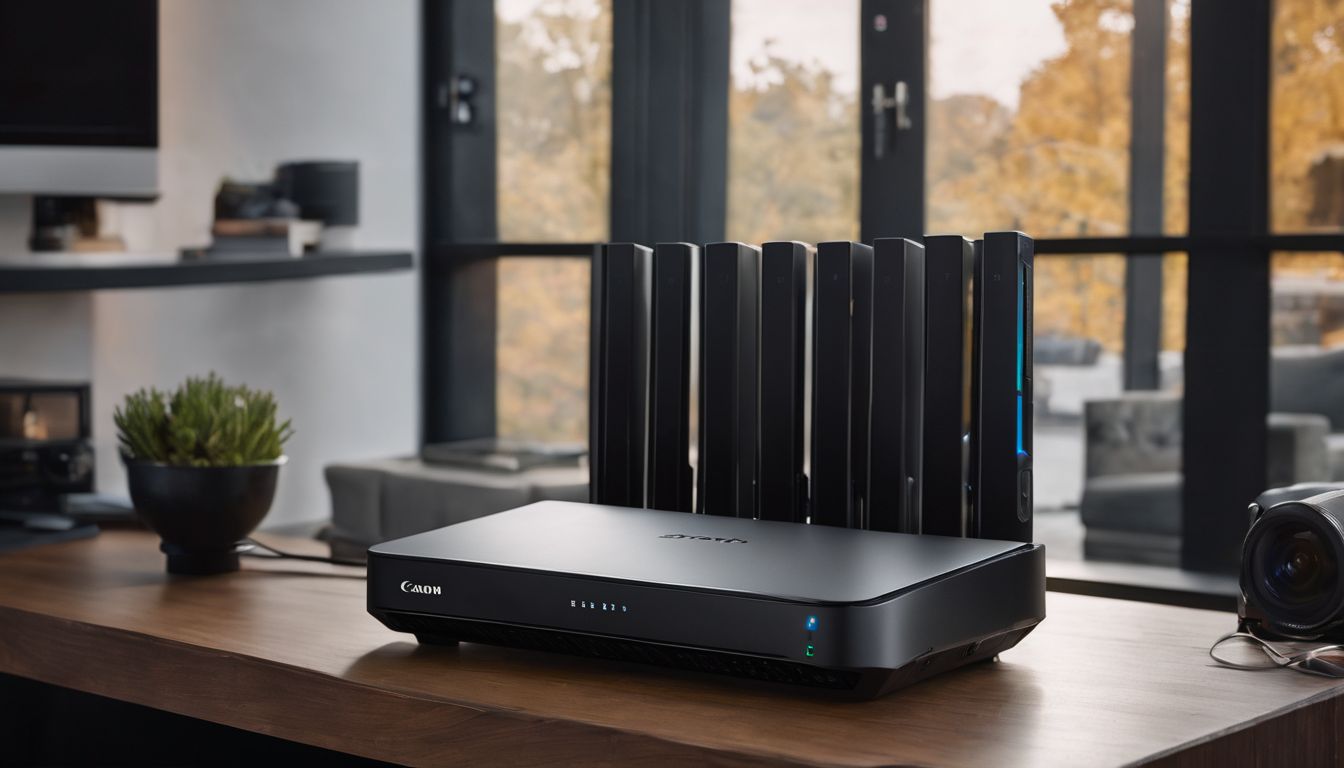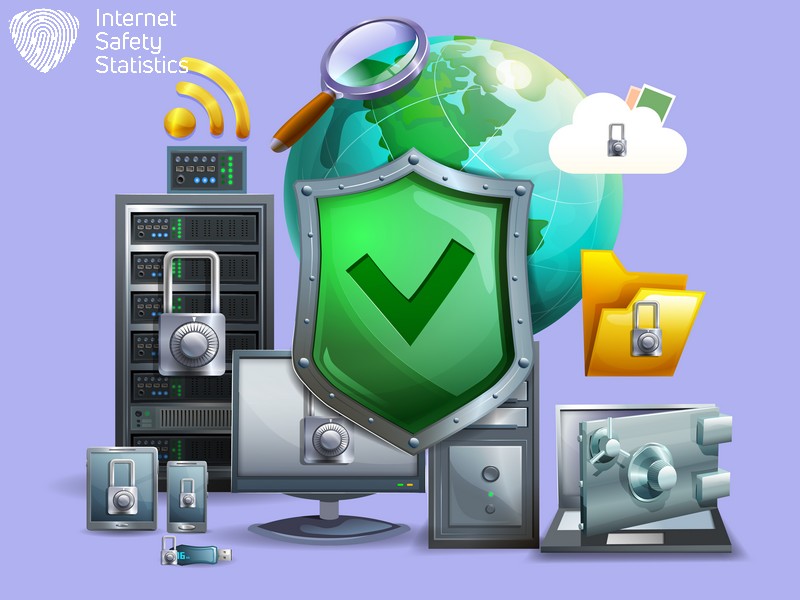
Are you concerned about the safety of your home Wi-Fi network? Every day, countless networks face threats from hackers looking for weak spots. Our guide offers straightforward steps to shield your online space and keep prying eyes at bay. This guide offers a roadmap to a secure home network. With straightforward steps, you’ll learn how to create strong passwords, enable encryption, and implement best practices to shield your online activity from prying eyes. By following these measures, you can create a secure and dependable internet environment for yourself and your loved ones.
Dive in for peace of mind!
Importance of Having a Secure Home Network
Keeping your home network secure is like locking your front door at night. It protects you from intruders who want to steal personal information or take control of your devices. Cybersecurity at home starts with a strong defence around the internet connection everyone relies on. A well-protected network stops hackers from sneaking in and causing havoc, ensuring confidential work files, family photos, and financial details stay safe.
Encrypting your WiFi helps shield conversations and data flowing through it. Hackers are always on the lookout for weak spots in networks to exploit. Changing default router login credentials keeps them guessing rather than gaining easy access. Staying up-to-date with firmware updates ensures that any security holes are patched before attackers can wriggle through them, uncompromising your internet safety.
Steps to Set Up a Secure Home Network
Choose a strong password for your router to prevent unauthorised access. Strengthen your Wi-Fi encryption to protect your network from potential intruders. A VPN can provide additional security and privacy for all devices connected to your home network.
Choose a Strong Password for Your Router
When setting up your home network, selecting a robust password for your router is crucial. A strong password helps prevent unauthorised access and protects your network from potential security breaches.
Ensuring your router’s password is unique and complex greatly enhances its security, making it more difficult for hackers to access your network. By incorporating a combination of uppercase and lowercase letters, numbers, and special characters into your router’s password, you can significantly strengthen its resilience against hacking attempts.
Choosing an intricate password for your router also aligns with best cybersecurity practices. It is one of the first lines of defence in safeguarding your home network from cyber threats.
Strengthen Wi-Fi Encryption
To strengthen Wi-Fi encryption, ensure your router uses the latest encryption standard, such as WPA3. Encrypting your network can help protect the information sent through it and prevent unauthorized access.
Regularly reviewing security policies and settings on your router can also enhance your network’s security; ensure you choose a strong, unique password and avoid using default settings to mitigate potential vulnerabilities. By following these steps, you can significantly bolster the security of your home network and keep your personal information safe from potential threats.
Use a VPN for Additional Security
Enable a VPN for enhanced security and privacy when accessing the internet from your home network. A VPN encrypts data, preventing unauthorised access, especially on public Wi-Fi networks. With a VPN, you can protect sensitive information and maintain anonymity online. It also allows access to region-restricted content while safeguarding against potential cyber threats.
Keep Router Firmware Up to Date

Regularly updating your router’s firmware is crucial for maintaining a secure home network. This ensures that the latest security features are in place, helping to protect against potential threats and vulnerabilities. By keeping the router firmware up to date, you can enhance the overall security of your network, providing a safer environment for all connected devices.
Regularly updating your router’s firmware is essential to safeguarding your home network from potential security risks. It helps ensure that the latest protection measures are in place, strengthening your defence against cyber threats and ensuring a more secure internet experience for you and your family or colleagues.
Utilise a Firewall
To further bolster your home network’s security, it is essential to utilise a firewall. A firewall acts as a barrier between your internal network and the internet, monitoring and controlling incoming and outgoing traffic based on predetermined security rules. By setting up a firewall, you can prevent unauthorised access to your network, protect against potential cyber threats, and safeguard sensitive information transmitted across your devices.
This crucial step ensures an additional layer of defence for your home network, enhancing protection against malicious attempts to compromise security.
Consider Changing the Router’s IP Address
After strengthening your Wi-Fi encryption and setting up a firewall, another important step to enhance your home network security is to consider changing your router‘s IP address. Changing the default IP address can help protect your network from potential attacks by making it more difficult for hackers to access or manipulate it. By altering the IP address, you can deter cyber threats and ensure your home network remains secure.
Customising the router’s IP address also adds a layer of protection to prevent unauthorised access and provides greater control over who can connect to your network. It’s a simple but effective measure that contributes significantly to safeguarding your internet connection and maintaining a secure digital environment for all devices connected to the network.
Additional Tips for a Secure Home Network
Consider changing your router’s IP address, use MAC address filtering, and create a guest network for added security. To learn more about setting up a secure home network, keep reading!
Use MAC Address Filtering
Filtering MAC addresses can add an extra layer of security to your home network. By specifying which devices can connect through their unique MAC addresses, you can prevent unauthorised access and ensure that only trusted devices can join your network. This feature is particularly useful for parents who want to control their children’s devices on the internet or office workers looking to maintain a secure work environment.
Consider enabling MAC address filtering within your router settings and entering the MAC addresses of all authorised devices. This will help secure your network from potential threats and ensure that only known and approved devices are granted access.
Place Router in a Central Location
Positioning the router in a central location within your home can help ensure the Wi-Fi signal reaches every corner, providing consistent and reliable internet access. Placing the router centrally also helps to minimise interference from obstacles such as walls and electronic devices, optimising network performance.
The central placement of the router is vital for maintaining strong and secure wireless connectivity throughout your home. It enables efficient distribution of the Wi-Fi signal, enhancing network coverage while minimising potential dead spots and ensuring that all connected devices receive a stable connection.
Create a Guest Network
To enhance the security of your home network, consider setting up a guest network. This allows visitors to access the internet without gaining entry to your main network, keeping your data and devices safe from potential threats. With a separate guest network, you can control who can access certain parts of your home network while ensuring guests can still enjoy Wi-Fi connectivity.
Configuring a guest network helps segregate different types of users and devices to avoid unauthorised access to sensitive information on your primary network. By doing so, you’re adding an extra layer of protection for both yourself and anyone using your Wi-Fi connection.
Disable Remote Router Access

Secure your home network by disabling remote router access. This crucial step prevents unauthorised individuals from accessing and tampering with your router settings, reducing the risk of potential security breaches. By doing this, you can ensure that only authorised users within physical proximity of the router can make changes to its configuration, enhancing your network’s protection.
Reviewing security options and settings on your router is vital for understanding and strengthening your network’s security. It’s also important to keep your router’s firmware current, as newer versions often include essential security features.
Verify Connected Devices
Review all connected devices regularly. Check the list of devices accessing your network to ensure that only authorised gadgets are connected and identify any unfamiliar or unauthorised access. Doing this helps prevent potential security breaches by detecting unknown users attempting to access your network. Regular device verification ensures a secure and safe home network for you and your family.
Regularly check the list of connected devices on your network. This can help you detect any unusual activity or unauthorised access, ensuring the security of your home network and protecting it from potential threats.
Upgrade to a WPA3 Router
After verifying and securing all your connected devices, consider upgrading to a WPA3 router for enhanced network protection. WPA3 is the latest Wi-Fi security protocol, offering improved encryption and resistance against various hacking attempts. Upgrading to a WPA3 router can provide stronger safeguards for your home network, making it more challenging for unauthorised users to intercept or exploit your Wi-Fi signal.
The transition to a WPA3 router aligns with the best practices for securing your home network, as it is pivotal in fortifying the defences against potential threats. By leveraging advanced encryption capabilities, such as individualised data encryption between devices and simplified configuration processes, a WPA3 router brings added layers of security to your digital environment.
Keep Your Devices and Network Secure
Regularly update your system, ensure your router is positioned centrally, and use a VPN for all devices to keep your network secure. Be mindful of your router’s position and take the necessary steps to maintain a secure internet connection.
Run Regular System Updates
Keep your devices and network secure by running regular system updates. This simple step ensures that your devices are equipped with the latest security patches, protecting them from potential vulnerabilities. Regular updates also help improve your devices’ overall performance, ensuring a smoother and safer user experience.
You can avoid cyber threats by running regular system updates and keeping your home network secure. Take advantage of the latest security features and enhancements provided by these updates to bolster the protection of your devices and ensure a more secure internet connection for you and your family or colleagues.
Be Mindful of Where You Position Your Router
Positioning your router in a central location within your home can help ensure optimal Wi-Fi coverage. Placing it away from walls and obstructions, such as metal objects or other electronic devices, can also improve signal strength. Additionally, positioning the router at an elevated level can enhance its range and performance, providing better connectivity throughout your space.
Where you place your router is crucial for maintaining a secure home network. Positioning it strategically can help minimise potential interference and ensure that all areas of your home receive reliable internet access.
Use a VPN for All Devices
To further bolster the security of your home network, consider using a VPN for all your devices. VPNs, or Virtual Private Networks, create an encrypted connection between your device and the internet, ensuring your online activities remain secure and private. You can protect sensitive information from potential threats and unauthorised access by using a VPN on all your devices. This added layer of security is particularly important when accessing public Wi-Fi networks or conducting sensitive transactions online.
In addition to safeguarding your data, using a VPN can provide peace of mind by allowing you to browse the internet anonymously. With the increasing prevalence of data breaches and cyber attacks, utilising a VPN for all devices is essential in maintaining the security and privacy of your home network.
Securing your home network is crucial for internet safety. Updating router firmware regularly ensures the latest security features are in place. Using a VPN for all devices adds an extra layer of protection. Placing the router centrally and configuring strong Wi-Fi encryption helps ensure even distribution throughout your home. Ensuring device segregation through MAC address filtering keeps unauthorised users at bay.
FAQs
1. Why is WiFi encryption important for internet safety at home?
WiFi encryption scrambles the data on your network, making it harder for outsiders to access your internet and steal information.
2. What should I consider when choosing a location for my router?
Place your router in a central location in your home to prevent unwanted access from outside and ensure strong WiFi signals everywhere.
3. How can I create a strong WiFi password?
Use a mix of letters, numbers, and symbols in your password to strengthen security against hackers attempting to access your network.
4. Should I set up separate networks for my devices at home?
Yes, device segregation by creating different networks protects sensitive information since guests or less secure gadgets won’t connect with main devices like computers or smartphones.
5. What does setting up a firewall do for my home internet security?
A configured network firewall controls incoming and outgoing traffic, providing an additional layer of defence against potential cyber-attacks.
